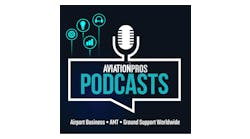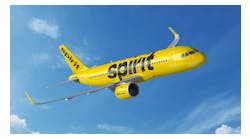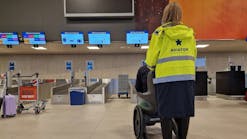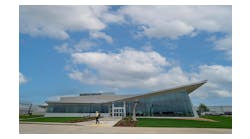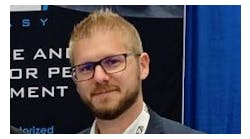So,You Want to Be A Flight Engineer?
By Stephen P. Prentice August 2001
Once upon a time, before ALPA was all-powerful, flight engineers on transport aircraft were licensed A&P mechanics. A mechanic was routinely hired for that spot and trained to fill the position on most of the large piston engine and early turbojet and turboprop aircraft. He was a professional flight engineer and had the same stature as the rest of the flight crew. The crew commonly included a navigator as well.
Labor unrest
In the early 1960’s, a strong, international
flight engineers’ union represented the interests of all the professional flight engineers.
Somewhere along the line when jets appeared, an effort to eliminate flight engineers began. Keeping in mind that the
flight engineers’ union may have been a thorn in their side, ALPA and the air carriers, with the help of FAA, went about changing the rules. A concerted effort from several quarters was mounted to replace flight engineers with pilots trained to be flight engineers.
Needless to say, the engineers were upset at this effort so they went on strike to spotlight their views, which they felt were being ignored. American Airlines and the Eastern Airlines engineers were the most vocal although they were joined by many others
in picketing at the White House in Washington, DC. Indeed, the American pilots were so upset at the treatment of the engineers by ALPA that they quit that union and started their own, now called Allied Pilots Association. The strike activity shut down the industry and even the President at the time, John F. Kennedy, could not get them back to work. The recollection of some old timers is that they all even received telegrams from the President asking them to go back to work!
Pilot training for all
A Commission was convened to try and get the companies, the unions, ALPA, and the FAA, together. The final solution resulted in offering commercial pilot training to all flight engineers so that everybody would be a pilot. In order to take care of the old timers, engineers were given basic pilot training so that they could qualify as a commercial pilot, still remain at the engineer’s position and thus, satisfy the new rules. Most had no desire to fly the aircraft but nonetheless, they were offered training. Some were offered the value of the training in dollars as an alternative. Many were made pilots, others simply retired or continued as flight engineers. New hires had to have pilot backgrounds and had to be hired as flight officer pilots and trained as flight engineers. It no longer mattered whether or not they had a mechanic’s certificate — this point held little significance to most companies as time went on.
It all comes down to money
The real reason the flight engineer position
was eliminated by most air carriers was primarily to save money. The carriers, of course, replied that the state-of-the-art aircraft did not require an engineer any longer on the flight deck — he could be replaced by instrumentation. The B737 was designed with and without a flight engineer position, but eventually the position was discarded. The carriers wanted one less paycheck on the flight deck and if still necessary, a low paid one at that. Never mind that the third set of eyes in the cockpit many times could and did make a big difference.
The military was smart and kept the need for a flight engineer in most of their aircraft including twin-engine types. All of the current, large military transports have flight engineer positions. It still makes good sense to have an additional crewmember to monitor the workings of the aircraft.
But alas, money rules.
The need for change
You can still attend a private flight engineer
school that is approved under Part 147 or you can be employed by an air carrier with an approved training program — assuming of course that they operate aircraft that requires a flight engineer. Mechanics however, are not permitted entry into a flight engineer program with an employer unless they are also pilot qualified. And, in order to get into an approved school, you must have the ability to get at least five hours of actual flight engineer training in an aircraft. Interestingly, if you have a commercial pilot certificate and an instrument rating, the five-hour, in-flight requirement is waived. So the big question is, How can a mechanic without pilot time become a flight engineer?
Various schools around the country have submitted alternative ideas — so far without success. Requests for exemptions by a petition to the FAA have been filed. One such exemption request was filed by Captain Bo Corby of Simulator Training Inc. located in Seattle, WA. Capt. Corby told me that the need for flight engineers would continue for some time because of the high turnover in air carrier engineer ranks. Training mechanics and other qualified people for this position is one obvious solution. Capt. Corby says that the big problem is getting applicants over the requirement for the five hours of actual flight time in the FAR. The present rules are impractical and a new approach
must be considered by FAA to certify flight engineers.
It seems fair to say that someone who has
military flight engineer training is actually more qualified to be exempted from the five hours in flight requirement than someone who holds a bare-bones, general aviation commercial license and an instrument ticket and is exempted from the five-hour requirement. The mechanic flight engineer is eminently more qualified than the commercial pilot, especially if he completes an FAA-approved flight engineer program.
Another peculiar part is that a military flight engineer with at least 100 hours of logged flight engineer time can sit and take the practical test for a turbojet flight engineer certificate in a B727 without any further training or other requirements. This provision seems absurd. There is little chance such an engineer candidate would pass the test without additional training. This engineer however, would
be subject to the five-hour, in-flight requirement if he or she was enrolled in a training course. Something like a Catch-22 situation.
The rules have to be changed.
FAR 63.31 & Appendix C
FAR 63.31 and Appendix C sets out all the specific rules to become a flight engineer. However, if you are hired (as an FO Pilot type) with a company that uses FE’s, you don’t have to worry because they take care of all your training and certification as an employee.
Basically, for a mechanic to qualify without a commercial pilot certificate, he or she has to be able to acquire at least five (5) hours of actual flight training as an FE (63.37(b)1) among other requirements. The five hours of flight time as a flight engineer trainee has always been the rub for a mechanic applicant. Where do you
get it? You can’t occupy an FE seat in revenue flight, except ferry flights or a designated trainer aircraft. This is very difficult when the aircraft operator must try to make money with the aircraft to pay bills, thus restricting flight to revenue runs.
The exemption
As previously mentioned, the FAR provides
an exemption to the five-hour flight requirement for commercial pilots with instrument ratings. This is rather obscure but can be found outside the regs in Amendment 63-15,37FR9758. The amendment allows such applicants to train without any actual FE panel experience. If you don’t have the pilot certificate, you must acquire the five hours of FE panel time as otherwise stated in the FAR.
A good argument
A good argument to support the idea that a mechanic flight engineer should not be required to have flight time as a pilot involves a military flight engineer, who may have hundreds of hours on the panel as a military flight engineer, but without a commercial pilot license, he or she would be required to complete the five-hour actual in-flight requirement in say, a B727. Even though their training is much more significant and applicable to the flight engineer panel, they are not exempted from the five-hour requirement. There is a growing and continuing need for qualified flight engineers as the turnover of flight engineers continues.
The rule, (FAR 63.37(b)(1) through (4), as presently written, clearly discriminates against mechanical people by the "five-hour" requirement. It is simply arbitrary and should be changed.
There should be a way to qualify an airman for the flight engineer certificate without holding a commercial certificate and without the five hours of in-flight experience at the actual aircraft panel.
A solution
The petition for exemption filed by Simulator
Training Inc. provides for an expansion of the Line Oriented Flight Training (LOFT) concept to include a school-structured, in-flight observation program to replace the current requirement of occupying the flight engineers station. This is really a no-brainer. What better training for the job can be acquired other than direct observation and note taking of actual flight operations? The airlines use supervised (by another engineer) training on revenue flights during initial operating experience. The observation technique is a far better and effective learning tool than the five hours called for in the FAR or the mere fact of having a commercial license that exempts the same.
The observation program would augment LOFT and LOE concepts and add the Line Oriented Observation Program to a training program.
Watch for changes to come.
Stephen P. Prentice is an attorney whose practice involves FAA-NTSB issues. He has an Airframe and Powerplant certificate and is an ATP rated pilot. He worked with Western Airlines and the Allison Division of GMC in Latin America, servicing commercial and military overhaul activities and is a USAF veteran. E-mail: [email protected]

